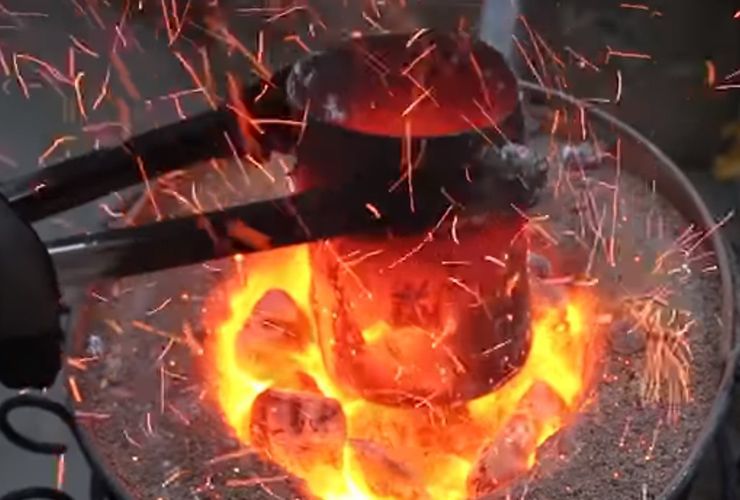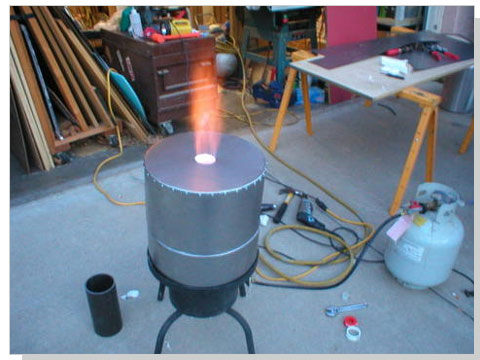Unveiling the Intricacies of Style and Manufacturing at a Metal Foundry
The layout and manufacturing processes at a metal foundry entail a series of elaborate steps. Each phase, from choosing resources to melting and spreading, plays a critical duty in the end product. Aluminum Foundry. Accuracy and quality assurance are vital in this sector. As innovation advances, brand-new innovations are emerging. These advancements might redefine standard practices. What ramifications do these changes hold for the future of steel factories?
The Melting Process: Transforming Raw Products Into Fluid Metal
The melting process works as the critical initial step in changing basic materials into liquid steel, a treatment crucial for foundry operations. This phase begins with the cautious selection of steels, which might include aluminum, iron, or copper, depending upon the wanted end product. Each material is examined for purity and composition to assure optimal melting conditions.

As the steels reach their melting point, they transform from strong to liquid, enabling more improvement. This process can likewise consist of the elimination of impurities via slag formation, guaranteeing the quality of the fluid steel. Inevitably, the successful conclusion of the melting process lays the foundation for succeeding metalworking procedures.
Molding Methods: Forming Metal With Accuracy
Adhering to the melting process, the next stage in steel foundry operations includes molding strategies that shape the liquid steel into desired types. Different methods are used, each picked based upon the details demands of the job. Sand casting, among the most common strategies, makes use of a mix of sand and binder to develop mold and mildews that can be quickly formed and recycled. An additional method, financial investment spreading, entails creating a wax pattern that is covered in a ceramic covering, allowing for intricate layouts and high precision.
Pass away spreading, in contrast, utilizes high-pressure to infuse liquified steel right into steel mold and mildews, resulting in consistent and durable products. Furthermore, the selection of molding method affects the cooling price, surface area coating, and dimensional precision of the last product. Subsequently, understanding these strategies is vital for enhancing style and making certain the effective production of metal parts customized to particular applications.
Casting Techniques: From Prototype to Production
Numerous spreading methods are employed in steel foundries to shift from model advancement to full-blown manufacturing. Among these methods, sand casting sticks out for its adaptability and cost-effectiveness, making it suitable for both huge and small production runs. Financial investment casting, known for its precision, is frequently made use of for intricate geometries, permitting great information in the end product. Die spreading, ideal for high-volume manufacturing, makes use of molten metal injected right into molds, offering superb surface area coating and dimensional precision.

Quality Assurance: Making Sure Excellence in Every Pour
While the casting procedure can differ significantly in between methods, maintaining Visit Website extensive quality assurance is important to determine that every put fulfills the called for standards. Quality assurance in a metal foundry includes a series of systematic checks and analyses developed to determine defects early in the manufacturing process. This consists of meticulous assessments of raw materials, surveillance of melting temperature levels, and evaluations of mold honesty.
Foundry workers utilize numerous screening techniques, such as non-destructive screening you can try these out and dimensional verification, to ascertain that spreadings accomplish preferred requirements. In addition, adherence to established market standards and qualifications enhances the dependability of the final item.
Responses loopholes are additionally critical; any type of discrepancies kept in mind throughout quality evaluations are evaluated to fine-tune processes and reduce future errors. Ultimately, a culture of top quality guarantee promotes not only consumer satisfaction but also a track record for excellence in the competitive landscape of metal production.
Advancements and Technologies: The Future of Metal Foundries
The landscape of metal foundries is rapidly advancing, driven by improvements in modern technology and ingenious methods. Automation and robotics are changing typical process, improving effectiveness and accuracy throughout manufacturing. Automated pouring systems and robot arms reduce human mistake, causing better outcomes. Additionally, the integration of synthetic intelligence is allowing anticipating upkeep, optimizing equipment performance, and reducing downtime.
Additive manufacturing is becoming a game-changer, allowing for rapid prototyping and the production of complicated geometries that were formerly unattainable. This technology assists in the personalization of steel components, satisfying particular client needs without significant time hold-ups.
Sustainability is also a vital emphasis, with shops embracing greener methods, such as recycling scrap steel and utilizing energy-efficient heating systems. These technologies not just enhance performance however likewise align with international initiatives towards ecologically liable manufacturing, making certain the future of steel foundries remains affordable and durable in a transforming industrial landscape.
Frequently Asked Inquiries
What Sorts of Metals Are Frequently Used in Factories?
Usual steels made use of in shops include light weight aluminum, cast iron, brass, bronze, and steel (Metal Foundry). Each metal possesses distinct homes, making them appropriate for various applications in markets like automobile, aerospace, and construction, to name a few
Just How Do Factories Take Care Of Waste and Environmental Influence?
Foundries manage waste and ecological effect by carrying out recycling programs, utilizing innovative purification systems, and sticking to strict regulatory requirements. They often buy lasting innovations to reduce exhausts and browse around this site advertise responsible resource use throughout their operations.
What Precaution Are in Place for Workers?
Factories execute different safety measures for employees, consisting of personal protective equipment, appropriate ventilation systems, normal security training, emergency situation action protocols, and rigid adherence to work-related health and wellness laws to minimize dangers related to unsafe products and tools.
Exactly how Lengthy Does the Whole Production Refine Commonly Take?
The whole manufacturing process usually takes a number of weeks, depending on the complexity of the layout and the products used. Factors such as mold prep work, melting, and cooling time significantly affect the total duration of manufacturing.
What Are the Key Challenges Dealt With by Metal Shops Today?
Metal shops today face obstacles such as climbing product expenses, rising and fall need, ecological guidelines, proficient labor shortages, and preserving high quality control. These issues make complex production performance and productivity in an increasingly affordable market.
The style and manufacturing procedures at a metal foundry entail a series of intricate actions. The melting process offers as the crucial initial action in changing raw products right into liquid steel, a treatment necessary for foundry operations. Adhering to the melting procedure, the next stage in metal foundry operations includes molding techniques that shape the fluid metal into preferred types. Numerous spreading methods are employed in steel factories to move from model growth to full-scale manufacturing. Quality control in a metal foundry incorporates a series of organized checks and assessments developed to identify flaws early in the production process.